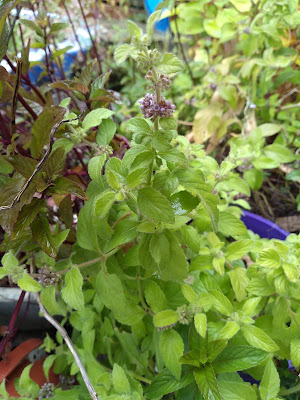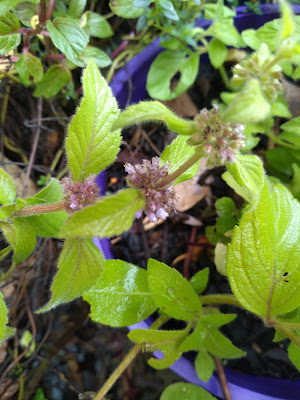My wife likes candles. I have beehives and I have collected and rendered some beeswax from them. I bet you can guess where this is headed...
That's right, I made some organic beeswax candles from scratch.
Making beeswax candles was heaps of fun, and a little scary, and I learned a lot from it. The best part of all this is that I am completely self taught. No one helped me, no one showed me what to do, and other than a little bee keeping info on the internet I didn't even read anything on how to do any of part this.
In hind sight I probably should have looked up a few youtube tutorials or something on candle making, it can be a little dangerous if done wrong, and if you are going to make candles you should do some reading. I just gave it a shot and it worked out ok, with a little research I think these would have turned out amazing.
I bought a nuc of bees, drove them home in the back of my car, transferred them into a proper hive, collected honey, got the bees to build straight foundationless comb, fed them when needed, stopped feeding them when not needed, split the hive, collected the beeswax, rendered the wax, bought silicone moulds, put in candle wicks, melted beeswax, hand poured beeswax into the candle moulds, and removed the completed candles from the moulds.
I did all of this with no help, being self taught, just giving it a go.
 |
Beeswax candle
|
 |
Second attempt, even neater
|
If beeswax gets too hot it discolours. Far more importantly, beeswax has a low flashpoint, and I am told that once it reaches flashpoint it burns with a ferocity that is far scarier than any oil fire. For these reasons it is best to melt beeswax over boiling water.
Cleaning beeswax off things is difficult, so I used some old pots and things that the kids had in their play kitchen. Certainly not the simplest or most elegant method, but it worked.
 |
Melting beeswax above boiling water
|
 |
Beeswax melts fast - this bowl floats nicely on the boiling water
|
I ordered some silicone candle moulds, they come entire with no hole or slit in them. I poked a hole in them using a needle so the wick could go through, and I cut a slit down the side using a Stanley knife to make candle release simple.
A rubber band holds the mould together and mysteriously it does not leak. It doesn't even leak out of the hole with the wick. The rubber band is enough for the silicon to hold together.
I poked some candle wick through the hole and tied it to a needle to keep it in place while I pour the molten beeswax. You could tie the wick to anything really, but I had needles handy so that is what I used. Candle wick comes in different thicknesses, so you need to do a little research to ensure you get the right size for the candle that you are making.
I used cotton wick, which is meant to be best for beeswax. I also made sure the wick did not have lead in it, apparently a lot of cheap wicks are impregnated with lead.
 |
Candle moulds with wick
|
I thought I might spill some beeswax while pouring, so I put down some baking paper. I am glad I did because when pouring I did spill some beeswax. This solidified on the baking paper and was put in a container with the rest of my wax to be used for something else later.
I guessed the amount of wax I would need, for the first candle I used the perfect amount. The second candle I spilled some wax and probably didn't have enough to begin with, so the candle is a little shorter than it otherwise would have been. It was remarkably close, not too bad for a blind guess.
After the candles set I weighed the amount of wax I used, so next time I was more precise.
 |
Beeswax has been poured - baking paper means no waste
|
After this I left the candles somewhere safe to cool. Once cool it was simple to remove the rubber band and carefully pop the beeswax candle out of the mould. The candles come out of the moulds surprisingly easily.
 |
Beeswax candles almost finished, I still need to trim the wicks
|
The detail on candles made using silicon moulds is just amazing! I can't believe a complete novice like me can create something as amazing as this so easily and quickly. I made a few more candles with my kids, each came out neater than the first.
Making beeswax candles was simple and heaps of fun. They turned out ok and with a little tinkering I think I could make some that are really neat.
I didn't use a candle making kit, I bought everything separately. This was more difficult and expensive than I would have liked.
After looking on the internet at the candle making beginner kits I think I could do better. Most kits are hideously expensive for what they are, and most have soy or paraffin wax. I don't know why but beginner candle making kits are aimed at people who only want to pour wax into a cup, or roll up some wax foundation, none ever have nice silicone moulds. Surely beginners would prefer to make cutie little candles that look like bee skeps and owls and things like that?
If buying things separately you need to work out the right type of wick and buy a minimum of 5 meters of it. Beginners probably want enough wax to make 3 cute little candles, they certainly don't want to spend $50 or more to get one kilogram of beeswax!
I have written some simple instructions, got a few silicone candle moulds, the right sized candle wick, a small amount of organic beeswax, and sell it together as a beginner candle making kit on my for sale page along with the perennial vegetables and things that I also sell.



















































